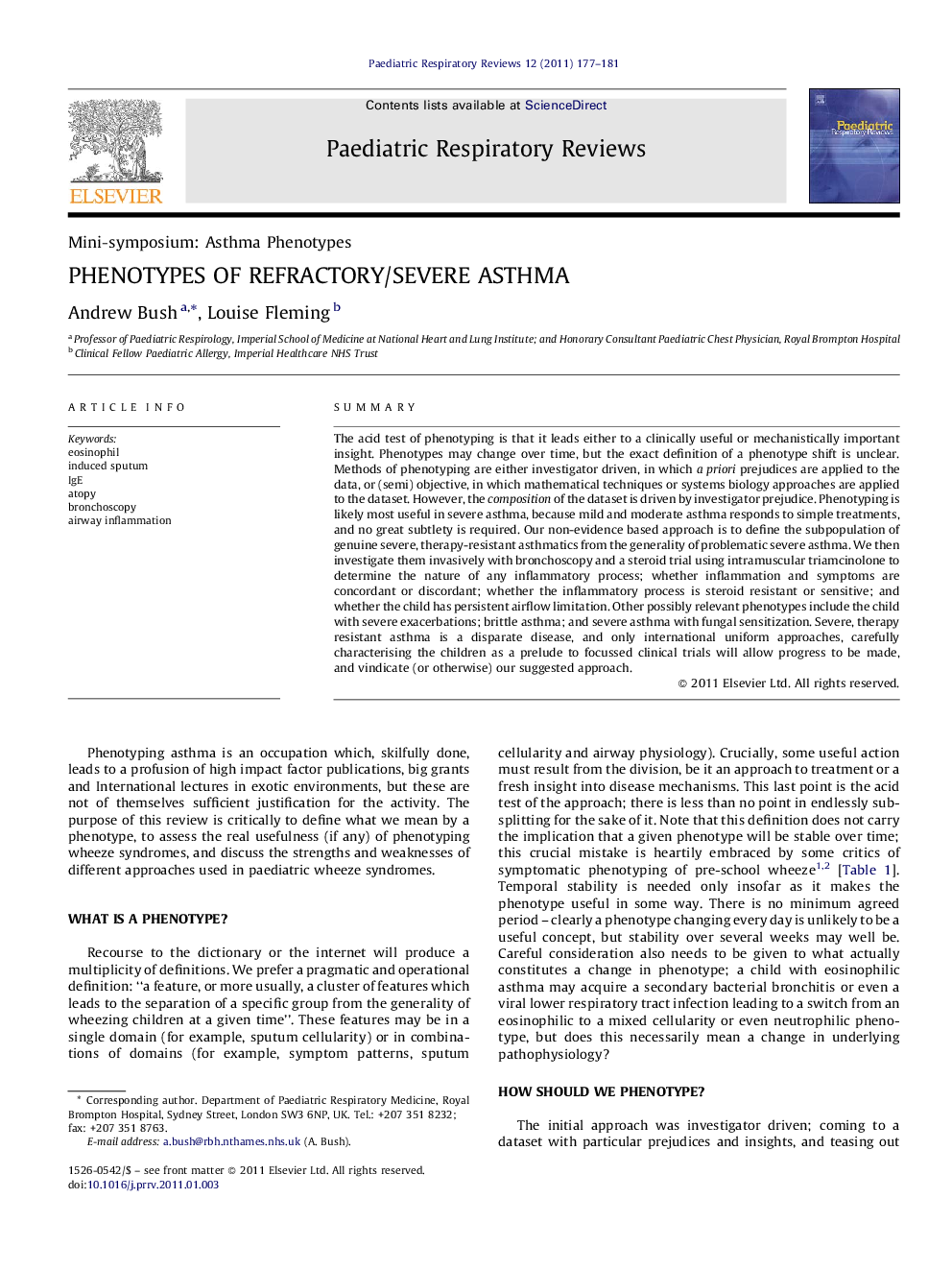| Article ID | Journal | Published Year | Pages | File Type |
|---|---|---|---|---|
| 4171126 | Paediatric Respiratory Reviews | 2011 | 5 Pages |
SummaryThe acid test of phenotyping is that it leads either to a clinically useful or mechanistically important insight. Phenotypes may change over time, but the exact definition of a phenotype shift is unclear. Methods of phenotyping are either investigator driven, in which a priori prejudices are applied to the data, or (semi) objective, in which mathematical techniques or systems biology approaches are applied to the dataset. However, the composition of the dataset is driven by investigator prejudice. Phenotyping is likely most useful in severe asthma, because mild and moderate asthma responds to simple treatments, and no great subtlety is required. Our non-evidence based approach is to define the subpopulation of genuine severe, therapy-resistant asthmatics from the generality of problematic severe asthma. We then investigate them invasively with bronchoscopy and a steroid trial using intramuscular triamcinolone to determine the nature of any inflammatory process; whether inflammation and symptoms are concordant or discordant; whether the inflammatory process is steroid resistant or sensitive; and whether the child has persistent airflow limitation. Other possibly relevant phenotypes include the child with severe exacerbations; brittle asthma; and severe asthma with fungal sensitization. Severe, therapy resistant asthma is a disparate disease, and only international uniform approaches, carefully characterising the children as a prelude to focussed clinical trials will allow progress to be made, and vindicate (or otherwise) our suggested approach.
